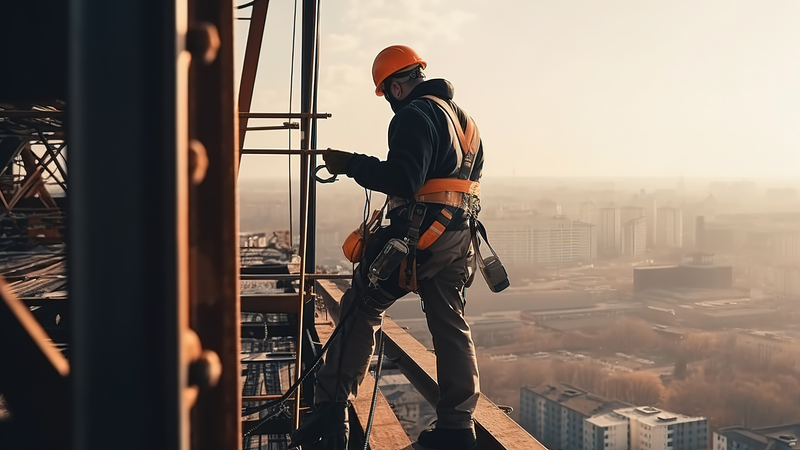People don’t often think twice about climbing a ladder, stepping onto a roof or using a scissor lift. For many, it’s just part of the job. However, every year lives are lost because of that routine. Between April 2024 to March 2025, 35 people died in Great Britain after falling from height at work. That’s one in three of all fatal workplace accidents, most of which are preventable.
Behind every statistic is a story. A devastated family, a shaken team and a business dealing with the consequences of a tragedy that could have been avoided. Here, Alexander Walton explores how these accidents can happen in any organisation and why working at height must be taken seriously.
More than a tick-box exercise
Protecting those working at height isn’t just ticking boxes, it’s about keeping them safe. The law is clear: if you're an employer, contractor or site manager, you have a duty to protect anyone working at height. The Work at Height Regulations 2005 and the Health and Safety at Work etc. Act 1974 set out your responsibilities, which include:
Support and oversight from the HSE
The Health and Safety Executive (HSE) has made falls from height a top priority. It recently updated its ladder safety guidance to help employers understand when ladders are appropriate and how to use them safely, including where to store equipment, how to check it’s safe and when working at height is necessary.
Risk assessments are an essential tool for achieving compliance in health and safety. The HSE provides digital risk assessment tools that make it easier for small businesses to ensure compliance.
The cost of complacency
When safety is overlooked, the consequences can be severe, for individuals and organisations alike. According to the HSE, around 5,000 non-fatal injuries were caused by falls from height last year. Falls from height also remain the leading cause of fatal workplace accidents in the UK.
Below are three examples of fines issued to employers following employees falling from height:
- British Airways was fined over £3m after two workers suffered serious injuries after falling from height. In one case, a 54-year-old employee fell 1.5 metres while unloading baggage from an aircraft, slipping off a televator due to gaps between its guardrails and the fuselage. These gaps varied by aircraft type and posed a fall risk. At the time, BA had begun retrofitting guardrails in response to previous HSE visits. The second incident also involved a televator, where platform flaps were left down during loading/unloading, creating a gap that led to another fall. HSE found that BA had failed to adequately control these height-related risks.
- East Riding Sacks Ltd was fined £533,000 after a worker fell to his death. An investigation by the HSE found that East Riding Sacks Ltd failed to provide a robust safe system of work. The company failed to identify the risk from a fall from height and implement appropriate measures.
- Bury Metropolitan Borough Council was fined £200,000 after a worker was injured when installing a Christmas tree using a scissor lift. The worker had no training and no risk assessment had been performed.
Safety by design
While working at height doesn’t have to be dangerous, safety only happens by design. Awareness is the first step, followed by action. The proactive management of health and safety risks ensures ongoing compliance with the law and the safety of everyone affected by your business.
Our experienced health and safety team includes a former HSE prosecutor and specialist defence solicitors. We understand the law, the risks and the reality of what happens when things go wrong — and we’re here to help you get it right.
We offer:
- Proactive, integrated health and safety legal solutions through our Brabners Protect offering.
- Practical, jargon-free training.
- Bespoke risk assessments.
- Crisis response and incident management.
- Full support during investigations and enforcement action.
Talk to us
We live by the motto that ‘prevention is better than cure’. If you’re ready to strengthen your safety culture, protect your people and stay on the right side of the law, our team is here to help.
Talk to us by calling 0333 004 4488, sending us an email at hello@brabners.com or completing our contact form below.




